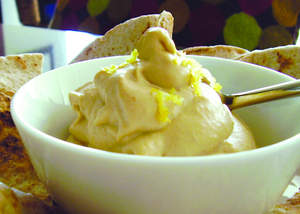MISSION, KS--(Marketwire - February 7, 2011) - (Family Features) Many have heard the saying, "You are what you eat" -- but knowing what to eat can be confusing. There's so much nutritional information out there, that it's easy to get overwhelmed. In fact, when the American Dietetic Association (ADA) surveyed people about why they don't do more to eat a healthy and balanced diet, 41 percent of respondents said they don't know or understand the guidelines set forth for diet and nutrition.
For those who have been confused or frustrated while trying to sort out nutritional information, take note. The following nutrient basics and dietary tips can help you start eating better today.
Nutrient Knowledge
Nutrients are necessary for the body to function properly, maintain energy and structure, and manufacture certain compounds necessary for good health, such as hormones and enzymes. The Dietary Guidelines Advisory Committee (DGAC) found that many adults and children fall short of some key nutrients including vitamin D, calcium, potassium and dietary fiber.
The 2010 Dietary Guidelines for Americans encourage people to follow a nutrient-dense, plant-based diet. A nutrient-dense food is one that has a substantial amount of vitamins and minerals relative to calories -- it gives you more nutritional bang for each bite. One of the simplest ways to get more nutrients into your diet is to eat soyfoods, particularly soyfoods in their whole form or made with whole soybeans.
"Whole soy provides a number of important nutrients, including potassium, magnesium, fiber, antioxidants and calcium, which tend to be shortfall nutrients among the U.S. population," said Katherine Tucker, PhD, co-author of the paper, "Simulation with Soy Replacement Showed That Increased Soy Intake Could Contribute to Improved Nutrient Intake Profiles in the U.S. Population," published in the December 2010 Journal of Nutrition Supplement.
Making Sense of Soy
All soy comes from soybeans, which are naturally grown beans similar in size to a pea. Soybeans have more protein than any other bean and are the only plant-based protein source that contain all nine essential amino acids, making them a source of high-quality, complete protein. Foods made from whole soy are minimally processed to keep soy's naturally occurring nutrients intact.
Soybeans are also a rich source of potassium, which is associated with lower blood pressure:
- 1/2 cup green soybeans (edamame) provides 485 mg of potassium
- 1/2 cup mature soybeans provides 443 mg of potassium
- 1/4 cup mature, dry-roasted soybeans provides 586 mg of potassium
- One SOYJOY® bar provides between 220 to 240 mg of potassium
For people interested in improving their overall diet, a reasonable goal should be to consume two servings of whole soyfoods a day. This delicious recipe is one way to make eating more soy a tasty endeavor.
For more information on whole soyfoods and recipes containing soy, visit www.soyjoy.com.
| Lemon Zested Soybean Hummus | |
| Makes about 1 1/2 cups | |
| 1 | 15-ounce can soybeans, rinsed and drained |
| 3 | tablespoons Tahini (sesame seed paste) |
| Juice and zest of 1 lemon (3 tablespoons juice) | |
| 1 | large clove garlic |
| 1/4 | teaspoon ground cayenne red pepper, or to taste |
| 1/4 | teaspoon sea salt, or to taste |
Place soybeans, Tahini, lemon juice, garlic, cayenne and salt into a blender or food processor. Cover and puree until smooth yet thick. Add cold water by the teaspoon only if necessary for proper blending. Stir in the lemon zest to taste.
Recipe developed by Jackie Newgent, RD, author of "Big Green Cookbook" and "The All-Natural Diabetes Cookbook."
